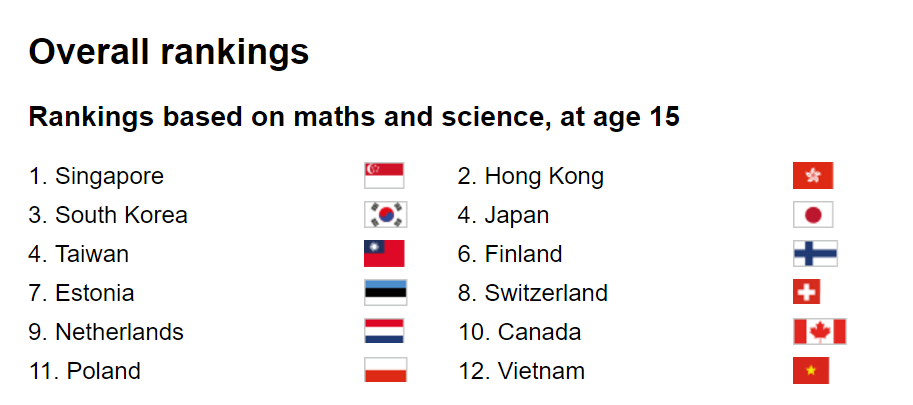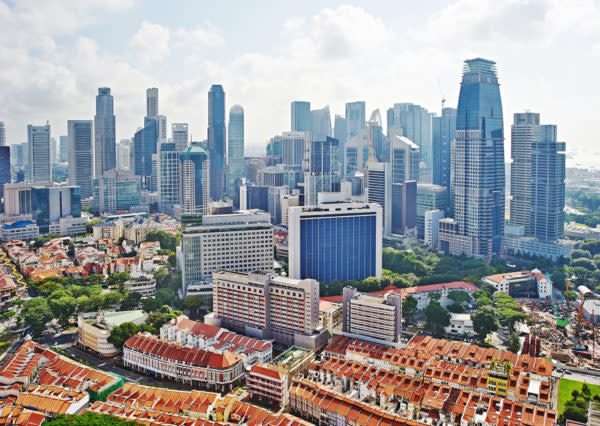Understanding the success of Singapore’s education system

An OECD survey conducted last year found that Singapore has the smartest students in the world. The country’s 15-year-olds competed with children from 76 countries in tests that measured their abilities in maths and science. The local students proved that the city-state’s education system produces the best results.
Andreas Schleicher, head of the OECD’s education assessment program says that when the world’s education ministers meet, “everyone listens very closely” when Singapore’s representative speaks.
According to the OECD’s report, the standard of education in a country is a “powerful predictor of the wealth that countries will produce in the long run.”

So, what is Singapore doing that gives its students the ability to perform so well in maths and science? One reason is definitely the “Singapore Model” of education, a system that has been in practice for over the last three decades.
The Singapore model
A report in the Financial Times explains that Singapore’s education system is focused on teaching students skills that help them get jobs.
Maths and science receive special attention. Even students who opt for humanities in the A-levels are required to continue studying maths or at least one science subject.

Source: Shutterstock
The Singapore model of education got its start in the 1980s when a group of teachers from the city-state visited several countries, including Canada and Japan to learn about different teaching methods. Subsequently, they developed a system that eschewed memorising lessons and instead focused on problem-solving skills.
The changes that were made in the teaching system were influenced by Jerome Bruner, an American educational psychologist who had authored the seminal book, The Process of Education. Bruner held that any subject can be taught to any child at any stage of development if teachers adopt the correct approach.
One unique feature of Singapore’s educational system is a limited number of subjects are taught at the primary level.
But the subjects are studied in detail so that students gain a greater degree of knowledge about them. This is in sharp contrast to the practice followed in the US where the range of subjects is wider but coverage is relatively narrow.
Singapore’s teachers play a key role

Source: Shutterstock
Source: Pixta[/caption]
The government has devised specific career paths for teachers as it understands that not all of them have the same set of goals. When a Singaporean opts to adopt teaching as a profession, there are three different career tracks that can be followed.
Teaching Track – this route allows for the professional development of teachers and provides them with the opportunity to gain an understanding of the method and practice of teaching. Those who follow this option can aspire to become a “Principal Master Teacher.”
Leadership Track – an individual who chooses this path specialises in administrative jobs and ultimately takes up a leadership position in a school. The Leadership Track is also designed to allow a person to work in Singapore’s Ministry of Education.
Senior Specialist Track – those who want to develop deep knowledge and skills in a particular subject can choose this option.
This approach has resulted in the country’s teachers focusing on gaining highly specialised skills in their chosen fields. The system is flexible and allows teachers to switch between different tracks.
In many other countries, a practice of pushing senior teachers into administrative or management roles is followed.
However, this is often counterproductive.
UK to emulate Singapore’s model

Source: Shutterstock
The OECD study ranked UK 20th compared to Singapore’s first position. This has prompted the UK to announce a scheme that will have 8,000 primary schools in the country adopting the approach that Singapore follows.
This scheme, which will cost £41mil, will initially train 700 teachers in “maths mastery.”
Students will use textbooks such as Inspire Maths and Maths No Problem, which are modelled on similar material used in Singapore.
Singapore is now shifting its focus to providing a more balanced education

Source: Pixabay
The nation’s schools have been paying greater attention to the all-round development of students in recent years. This is in contrast to the earlier practice of concentrating solely on the academic curriculum.
Students are encouraged to participate in outdoor activities and schools lay special emphasis on developing their emotional and physical health. But the OECD’s Andreas Schleicher says that although the steps that have been taken in this direction will help to provide a balanced education, more needs to be done.
He says that the country should also concentrate on developing “curiosity, creativity, and leadership” in its students to complement their academic prowess.
(By Ravinder Kapur)
Related Articles
- Which Industries Pay Most for Postgraduate Degree Holders?
- SkillsFuture – Make It Work For You
- Employment trends in Singapore

 Yahoo Finance
Yahoo Finance 